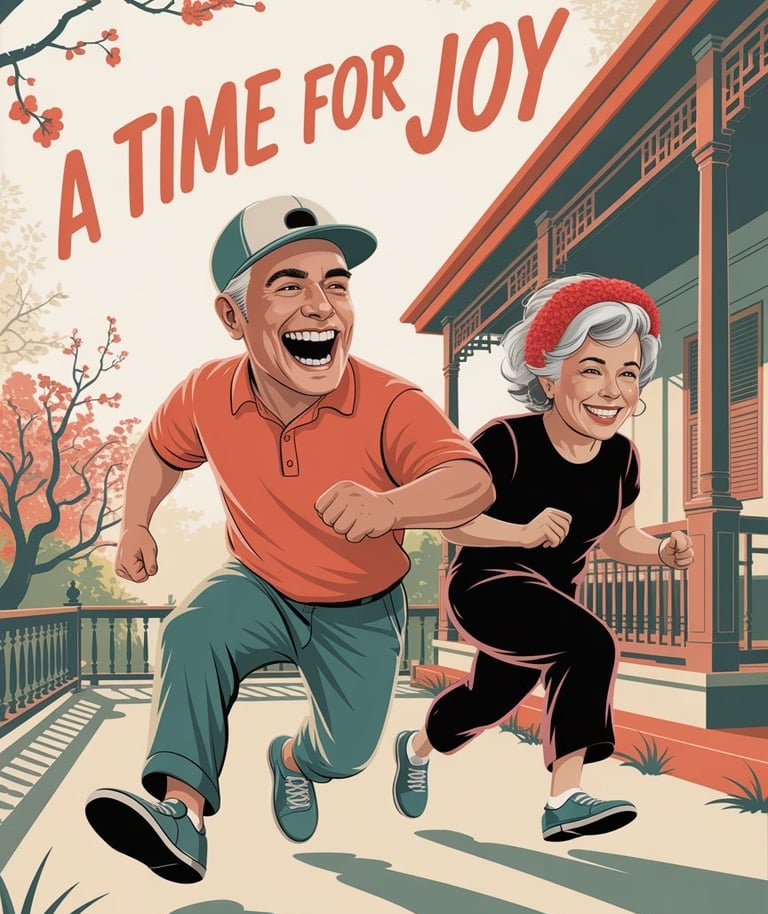FREE AI Analytics Tool for Health Reports and Scans available.
The Art of Retirement: A Runner's Journey
Retirement. It's a word that conjures images of freedom, relaxation, and perhaps a well-deserved break. But beyond the idyllic postcards, retirement is a profound life transition, a new chapter that, much like the sport of running, is a journey of preparation, pacing, challenges, and immense personal reward.
Let's explore the fascinating parallels between the discipline and joy of running and the unfolding art of a fulfilling retirement.
1. The Training Ground: Preparing for the Long Run
Just as a runner doesn't simply show up at the starting line of a marathon without preparation, a successful retirement journey begins long before the "finish line" of your working career.
Building Stamina: For a runner, this means consistent training, building endurance, and strengthening muscles. For retirement, it's about building financial stamina – saving, investing, and planning for long-term security.
Mapping the Course: Runners study the race route, anticipating hills, turns, and aid stations. Pre-retirees map out their desired lifestyle, considering housing, healthcare, hobbies, and travel.
Gathering Your Gear: Proper shoes, hydration, and nutrition are crucial for a runner. For retirement, it's about ensuring your "gear" is in order: wills, insurance, healthcare plans, and a support network.
Mental Fortitude: Training isn't just physical; it's mental. Visualizing success and overcoming doubts are key. Similarly, preparing for retirement involves mental shifts – envisioning a life without daily work, embracing new routines, and cultivating a positive mindset.
2. The Starting Line: Embracing the New Pace
The day you retire is akin to stepping onto the starting line of a long-anticipated race. There's excitement, perhaps a touch of nervousness, and an eagerness to begin.
The Gun Goes Off: The immediate rush of newfound freedom can be exhilarating. Like the initial burst of energy at the start of a race, there's a temptation to do everything at once.
Finding Your Stride: A seasoned runner knows not to sprint at the start. The first few weeks or months of retirement are about finding your new rhythm, adjusting to a different pace of life, and resisting the urge to overschedule or under-schedule.
Initial Adjustments: There might be unexpected discomforts – a new ache in the knee for the runner, or a feeling of aimlessness for the retiree. These are normal and require patience and adaptation.
3. Pacing Yourself: The Art of the Middle Miles
The bulk of both a long run and retirement lies in the "middle miles" – the sustained effort where true enjoyment and strategy come into play.
Consistent Effort: Just as a runner maintains a steady pace to conserve energy, retirees learn to manage their time and resources effectively. This isn't about constant activity, but consistent engagement with what brings joy and purpose.
Hydration and Fueling: Runners constantly refuel their bodies. Retirees must nourish their minds and spirits – through continuous learning, engaging hobbies, and maintaining social connections.
Enjoying the Scenery: The beauty of a long run isn't just the finish line; it's the landscapes, the fresh air, the feeling of movement. Retirement offers the chance to truly appreciate life's "scenery" – spending time with loved ones, pursuing passions, traveling, and simply being present.
Listening to Your Body (and Mind): A wise runner heeds warning signs of fatigue or pain. Retirees learn to listen to their own needs, recognizing when to rest, when to seek support, and when to adjust their plans.
4. Hitting the Wall & Pushing Through: Overcoming Challenges
No long run is without its moments of doubt, discomfort, or the dreaded "wall." Retirement, too, can present unexpected hurdles.
The Mental Battle: When a runner hits the wall, it's often a mental struggle as much as a physical one. Retirees might face moments of boredom, identity shifts, or unexpected health issues.
Reframing and Adapting: A runner might adjust their pace, walk for a bit, or focus on a small milestone ahead. Retirees learn to reframe challenges, adapt their plans, and seek new solutions.
The Power of Support: Cheerleaders and fellow runners provide motivation. Friends, family, and support groups can be invaluable during challenging phases of retirement.
5. The Finish Line: Reflection and Continued Journey
While a race has a definitive finish line, retirement is more of an ongoing journey. However, there are moments of reflection and a sense of cumulative achievement.
Crossing the Line: Reaching milestones in retirement – celebrating anniversaries, achieving personal goals, or simply enjoying sustained well-being – can feel like crossing a finish line.
The Afterglow: The satisfaction after a long run is immense. The sense of accomplishment and peace in later retirement, looking back on a life well-lived and a journey well-navigated, is equally profound.
Beyond the Race: For many runners, one race leads to another, or to new forms of activity. Retirement often opens doors to new roles – mentorship, volunteering, or simply being a source of wisdom and joy for others.
Conclusion: Run Your Own Retirement Race
The journey of retirement, much like the sport of running, is deeply personal. There's no single right way to do it. It requires preparation, mindful pacing, resilience in the face of challenges, and an unwavering commitment to enjoying the process.
So, as you contemplate or navigate your retirement, embrace the spirit of the runner: prepare diligently, find your unique stride, savor every mile, and know that every step forward is a part of your magnificent, unfolding journey. The track is open, and your most rewarding race is just beginning.


Address
Blk 8 Cantonment Close
SIngapore